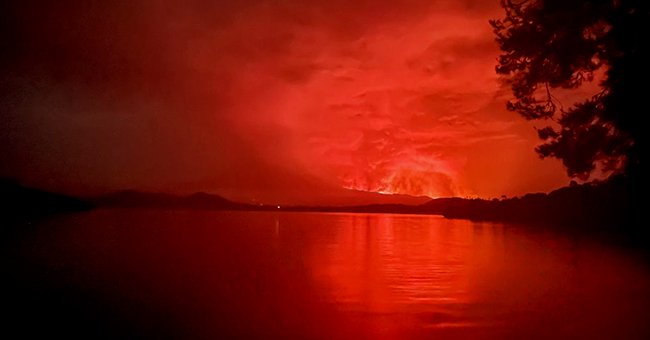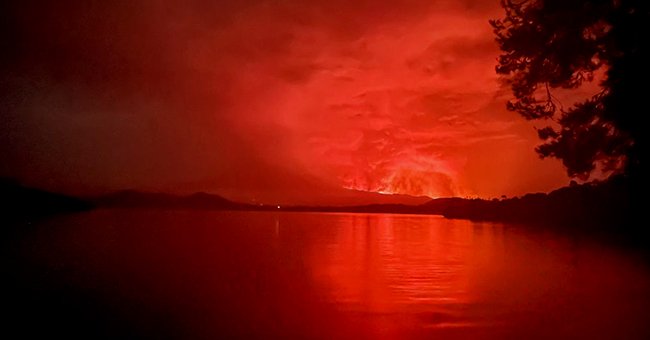
Nyiragongo Volcano in Congo Continued to Show a Lot of Activity over the Weekend – Details
Mount Nyiragongo Volcano in Congo has continued to show a lot of activity over the weekend, following its eruption a week ago.
According to CNN, 92 earthquakes and termors were recorded around Mount Nyiragongo Volcano, located in Virunga National Park, over the weekend of May 30, after it experienced a volcanic eruption on May 22, 2021.
After the area experienced the 11,500-foot-high volcano's eruption, earthquakes and tremors have been recorded throughout the area, even as far away as the Rwandan capital of Kigali, which is 65 miles away from the volcano.

A view across Lake Kivu, that show the flames caused from the volcanic eruption of Mount Nyiragongo. 2021. | Photo: Getty Images
The volcano is located in Goma, the capital of the North Kivu province, near Lake Kivu, on the Democratic Republic of Congo border to Rwanda. Citizens were unnerved by the tremors and many are still recovering from the volcano's eruption.
Constant Ndima, the military governor of North Kivu, said that most earthquakes and tremors were not felt by humans but rather recorded on specialized instruments. The governor said of the activity:
"There were 92 earthquakes and tremors in the last 24 hours. Only 4 were felt by humans, the rest were only picked up by instruments."
A volcanologist, Dario Tedesco, spoke to CNN about the earthquake activity. Tedesco has been surveying the volcano and explained that a rift in regional faults has continued to contribute to the activity.
The volcanologist added that the gray smoke from the volcano was an indicator that the crater floor was collapsing. The frozen top of the volcano is slowly and gently falling inwards.
Experts fear if there is an eruption underneath Lake Kivu, it could release a lethal and suffocating cloud of gas.
Tedesco noted that the movement is nothing to worry about. He explained that black smoke was an indicator of a possible expulsion and gray smoke meant that the area is not in any imminent danger.
Although no one had died due to the earthquakes, it was reported that at least 31 people passed away from the volcano's effects. Furthermore, over 400 000 people evacuated Goma and are waiting to return.
However, the city has continued to worry about the repercussions of the eruption. The BBC reported that scientists are concerned about the magma underground that has moved towards Lake Kivu since the eruption on Saturday.
Experts fear if there is an eruption underneath Lake Kivu, it could release a lethal and suffocating cloud of gas. This kind of eruption is called a limnic eruption, and although it is rare, it could pose a huge risk for the Goma residents.
If that were to happen, more people would likely die, and more would be displaced. Saturday's volcano destroyed 1000 homes and left 5000 people displaced.
Unfortunately, scientists are not certain if or when a limnic eruption could happen. Volcanologist Dr. Robin George Andrews told the BBC that it is impossible to know if it will reach the lake's surface or what the eruption would look like.
